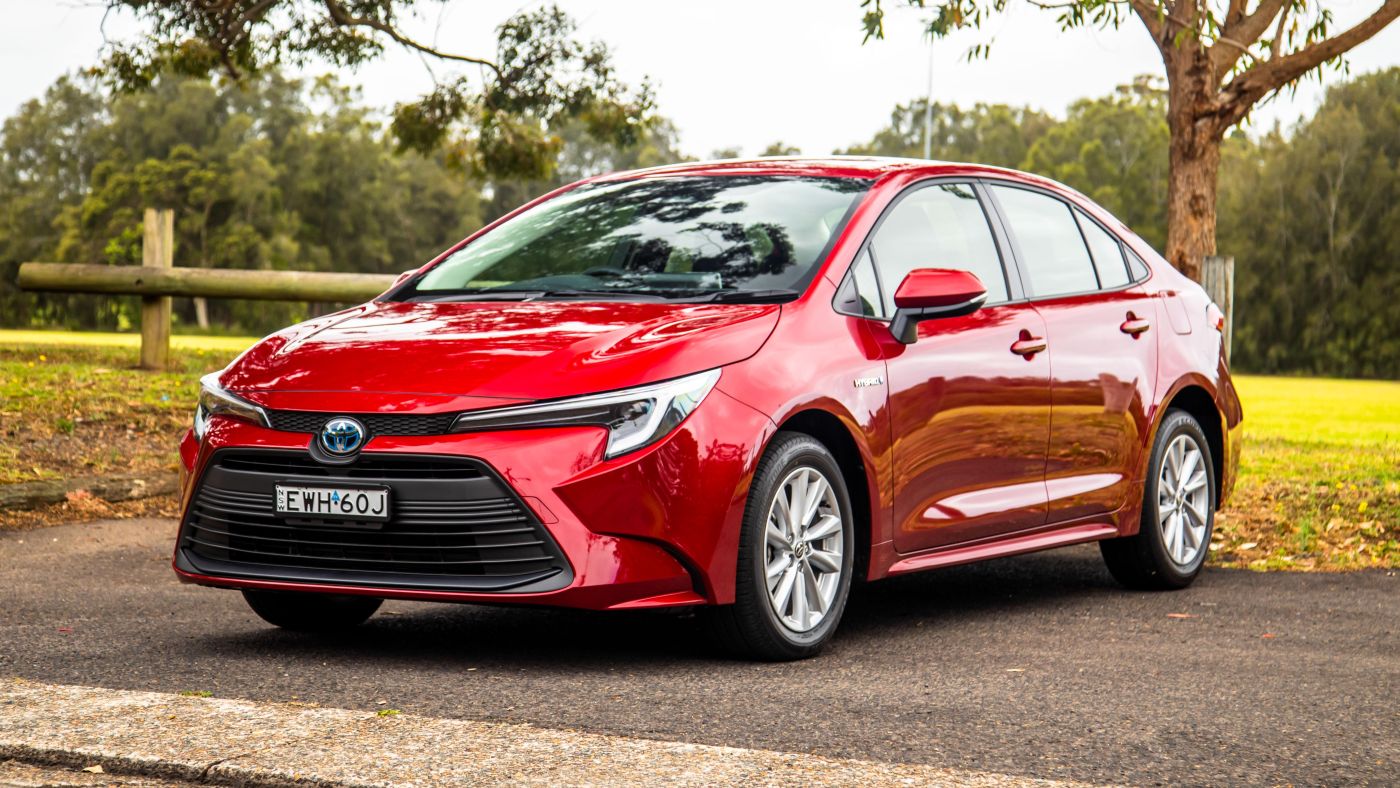Toyota has long been synonymous with hybrid technology, pioneering the mainstream adoption of gasoline-electric powertrains with the original Prius in the late 1990s.
Over the decades, the Japanese automaker has refined and perfected its hybrid systems, creating some of the most reliable and long-lasting vehicles on the road today.
However, not all Toyota hybrids are created equal, and while the brand maintains an overall excellent reputation for dependability, certain models have proven more problematic than others.
The hybrid landscape has evolved dramatically in recent years, with Toyota expanding its electrified offerings across nearly every segment of its lineup.
From compact cars to full-size SUVs, hybrid powertrains have become increasingly sophisticated, incorporating advanced battery technology, regenerative braking systems, and complex computer-controlled management systems.
While this technological advancement has brought improved fuel economy and reduced emissions, it has also introduced new potential failure points that didn’t exist in traditional gasoline-only vehicles.
Understanding which Toyota hybrids offer exceptional longevity versus those prone to frequent issues is crucial for consumers looking to make informed purchasing decisions.
Reliability in hybrid vehicles encompasses not just the traditional mechanical components like engines and transmissions, but also the intricate electrical systems, battery packs, inverters, and sophisticated software that manages the seamless transition between electric and gasoline power.
Some Toyota hybrid models have demonstrated remarkable durability, with many examples surpassing 200,000 miles with minimal issues, while others have experienced recurring problems that can lead to costly repairs and frustrating ownership experiences.
This comprehensive analysis examines ten Toyota hybrid models, highlighting five that have earned reputations for exceptional longevity and five that have struggled with persistent reliability issues, providing potential buyers with the insights needed to choose wisely in the hybrid marketplace.
5 Long-Lasting Toyota Hybrids
These exceptionally reliable vehicles feature proven hybrid synergy drive systems and precision-engineered battery management that deliver extraordinary longevity through years of seamless electric-gasoline integration across demanding taxi service and high-mileage commuting applications without major component failures.
Their thoughtful engineering includes robust nickel-metal hydride batteries, conservative power management algorithms, and simple control systems that resist the complexity issues typically created by over-engineered electronics or aggressive performance tuning during extended service intervals and extreme weather conditions.
From Prius taxis accumulating half-million miles with original hybrid components to Camry hybrids maintaining factory performance through decades of daily driving, these remarkable powertrains continue operating without developing battery degradation or system malfunctions.
Owners report exceptional durability with these proven hybrid solutions a longevity-enhancing quality feature that proves its worth through minimal repair costs and maintained fuel economy throughout extended ownership periods spanning multiple decades of reliable transportation service.
1. Toyota Camry Hybrid (2012-Present)
The Toyota Camry Hybrid stands as one of the most reliable mid-size hybrid sedans ever produced, consistently earning praise from automotive journalists, consumer advocacy groups, and long-term owners alike.
Since its introduction in 2007 and particularly from the 2012 model year forward, the Camry Hybrid has demonstrated exceptional durability across multiple generations, making it a benchmark for hybrid reliability in the competitive mid-size sedan segment.
The foundation of the Camry Hybrid’s reliability lies in Toyota’s mature Hybrid Synergy Drive system, which has been refined through millions of miles of real-world testing and continuous improvement.
The powertrain combines a proven 2.5-liter four-cylinder Atkinson-cycle engine with one or two electric motors, depending on the generation, managed by a sophisticated power control unit that has proven remarkably robust over time.
Unlike some hybrid systems that struggle with complexity, Toyota’s approach prioritizes simplicity and redundancy, resulting in fewer failure points and more predictable maintenance requirements.
Battery longevity has been a particular strength of the Camry Hybrid, with many owners reporting that their original battery packs have functioned well beyond 150,000 miles. The nickel-metal hydride battery technology used in earlier generations, while less energy-dense than newer lithium-ion systems, has proven exceptionally durable in real-world conditions.
Toyota’s conservative battery management strategy, which avoids deep discharge cycles and extreme temperature exposure, contributes significantly to extended battery life. When battery replacement is eventually needed, the process has become more affordable over time, with refurbished units available at reasonable prices.
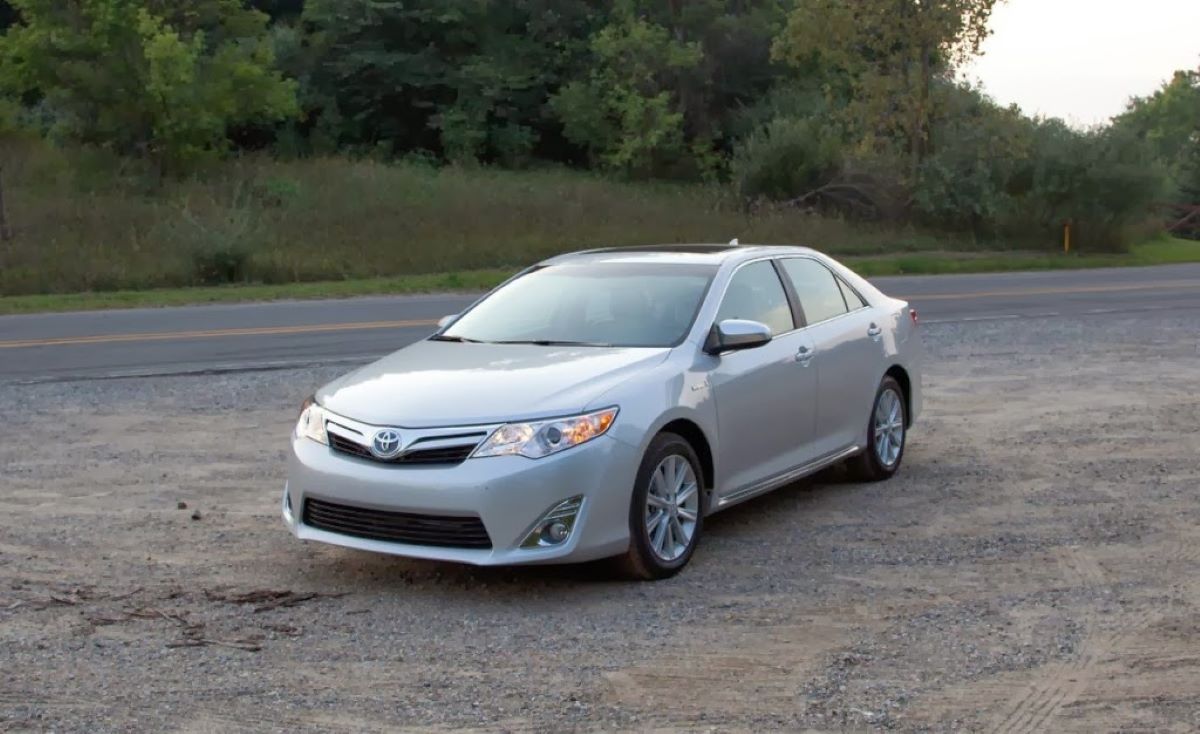
The mechanical components of the Camry Hybrid have also demonstrated impressive longevity. The Atkinson-cycle engine, while producing less peak power than a conventional engine, operates at lower stress levels and benefits from reduced operating hours due to electric motor assistance.
The continuously variable transmission (CVT) used in most Camry Hybrid models has proven more reliable than similar units in other manufacturers’ vehicles, with proper maintenance intervals extending operational life significantly.
Brake system longevity is another standout feature, as the regenerative braking system reduces wear on traditional brake components, with many owners reporting original brake pads lasting well over 100,000 miles.
Interior and exterior build quality has remained consistently high across Camry Hybrid generations, with materials holding up well to daily use and environmental exposure.
The dashboard electronics, climate control systems, and infotainment components have shown remarkable durability, with software-related issues being relatively rare compared to other hybrid vehicles.
The comprehensive warranty coverage provided by Toyota, including an 8-year/100,000-mile hybrid component warranty, demonstrates the manufacturer’s confidence in the system’s reliability.
Maintenance costs for the Camry Hybrid remain reasonable throughout its lifespan, with routine service intervals comparable to conventional vehicles.
The hybrid system’s self-diagnostic capabilities help identify potential issues before they become major problems, and the widespread availability of Toyota-trained technicians ensures that service and repairs can be performed at reasonable costs.
Many independent mechanics have also gained familiarity with Toyota’s hybrid systems, providing additional service options for owners. Common maintenance items like oil changes, air filters, and tire rotations follow conventional schedules, while hybrid-specific components typically require minimal attention until very high mileages.
Real-world longevity data supports the Camry Hybrid’s excellent reputation, with numerous examples documented at over 300,000 miles with original major components intact.
Taxi fleets, rideshare drivers, and high-mileage commuters have consistently chosen the Camry Hybrid for its combination of fuel economy and reliability.
The vehicle’s ability to maintain its hybrid functionality and fuel economy even at high mileages makes it an excellent choice for buyers seeking long-term value and minimal ownership hassles.
2. Toyota RAV4 Hybrid (2016-Present)
The Toyota RAV4 Hybrid has established itself as one of the most dependable compact SUVs in the hybrid segment, combining Toyota’s proven hybrid technology with the practicality and versatility that modern families demand.
Since its introduction in 2016, the RAV4 Hybrid has consistently ranked among the most reliable vehicles in its class, earning recognition from Consumer Reports and other automotive authorities for its exceptional build quality and long-term durability.
The RAV4 Hybrid’s reliability stems from its use of Toyota’s fourth-generation Hybrid Synergy Drive system, which represents decades of refinement and real-world optimization.
The powertrain combines a 2.5-liter four-cylinder engine with three electric motors in all-wheel-drive configurations, creating a system that not only delivers impressive fuel economy but also provides enhanced traction and capability.
The all-wheel-drive system’s electric rear motor eliminates the need for a traditional transfer case or rear differential, reducing mechanical complexity and potential failure points while providing precise torque distribution.
Battery technology in the RAV4 Hybrid has proven exceptionally robust, with both nickel-metal hydride and lithium-ion options demonstrating excellent longevity characteristics.
The lithium-ion battery pack, introduced in later model years, offers improved energy density while maintaining the conservative charge and discharge management that has made Toyota hybrid batteries so durable.
The battery pack’s location beneath the rear cargo area provides protection from environmental hazards while maintaining optimal temperature management. Warranty coverage extends to 10 years or 150,000 miles in some states, reflecting Toyota’s confidence in the system’s durability.
The mechanical reliability of the RAV4 Hybrid has been exemplary, with the engine, transmission, and drivetrain components showing minimal wear even under demanding conditions.
The continuously variable transmission has proven more reliable than conventional automatic transmissions in similar vehicles, requiring less frequent service and demonstrating fewer long-term issues.
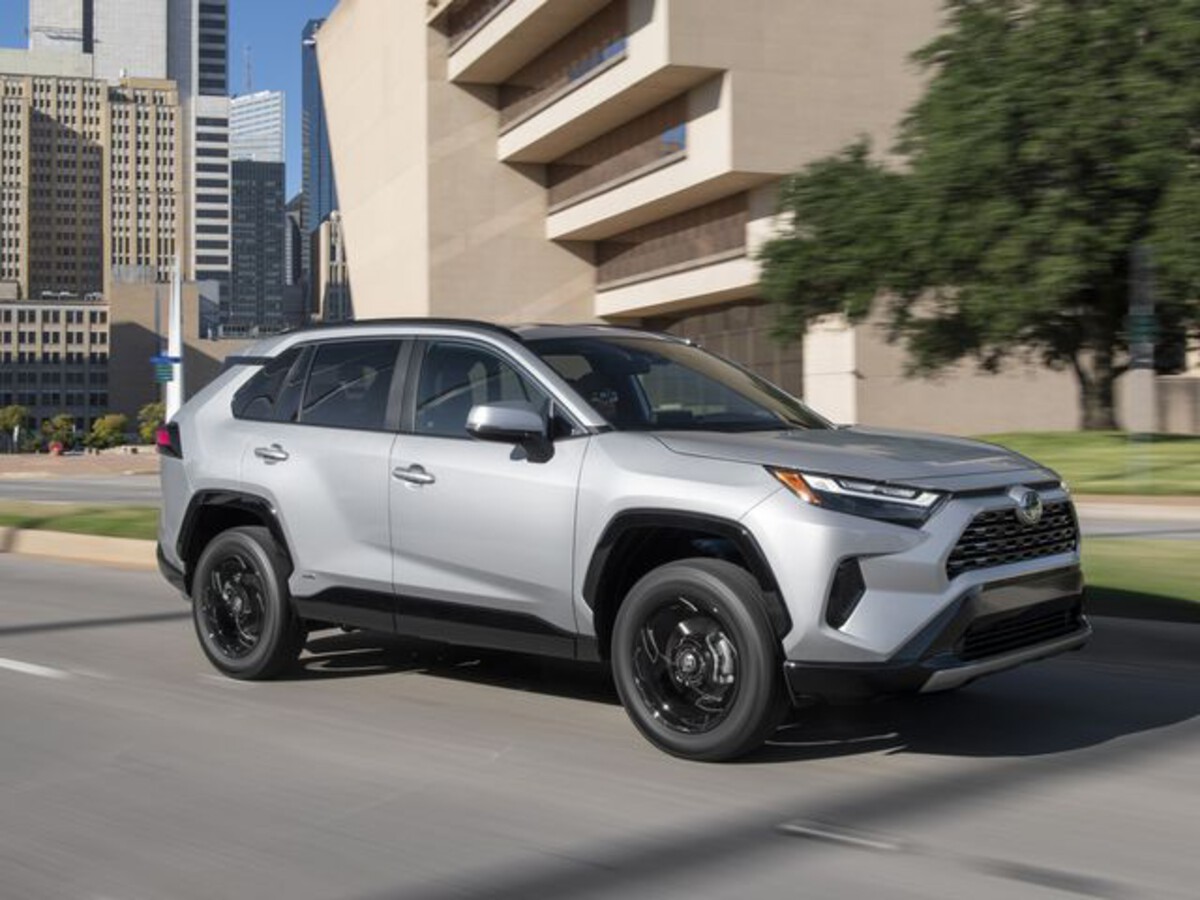
The all-wheel-drive system’s simplicity compared to mechanical systems contributes to its reliability, with fewer moving parts and reduced maintenance requirements.
The suspension components, braking system, and steering components have all demonstrated above-average longevity, even when subjected to off-road use and adverse weather conditions.
Interior quality and electronic system reliability have been consistent strengths of the RAV4 Hybrid across multiple model years. The infotainment system, climate controls, and driver assistance features have shown excellent long-term reliability, with software updates available to address any minor issues that arise.
The build quality of interior materials has proven durable, with seats, trim pieces, and controls maintaining their appearance and functionality well beyond 100,000 miles. The comprehensive suite of Toyota Safety Sense features has operated reliably without the false alarms or system failures that plague some competitors.
Maintenance requirements for the RAV4 Hybrid remain straightforward and cost-effective, following Toyota’s established service intervals with minimal hybrid-specific additions.
The hybrid system’s self-monitoring capabilities provide early warning of potential issues, while the robust construction of major components typically prevents catastrophic failures.
Common maintenance items include regular oil changes, air filter replacements, and brake inspections, with hybrid components requiring minimal attention. The regenerative braking system significantly extends brake pad and rotor life, reducing long-term maintenance costs.
Off-road capability and durability have been particular strengths of the RAV4 Hybrid, with many owners using their vehicles for camping, towing, and light off-road adventures without experiencing reliability issues.
The electric all-wheel-drive system provides immediate traction response that often exceeds traditional mechanical systems, while the hybrid powertrain’s low-end torque characteristics make it well-suited for challenging terrain. Ground clearance and approach angles allow for reasonable off-road capability without compromising the hybrid system’s reliability or efficiency.
Long-term ownership satisfaction remains high among RAV4 Hybrid owners, with many reporting trouble-free operation well beyond warranty periods.
The combination of fuel efficiency, utility, and reliability has made it a popular choice for families, outdoor enthusiasts, and commuters alike. Resale values remain strong, reflecting market confidence in the vehicle’s long-term durability and continued desirability. The RAV4 Hybrid’s proven track record makes it an excellent choice for buyers seeking a reliable, efficient, and capable compact SUV that will provide years of dependable service.
3. Toyota Corolla Hybrid (2020-Present)
The Toyota Corolla Hybrid represents the successful adaptation of Toyota’s hybrid technology to the compact car segment, delivering exceptional reliability and efficiency in an affordable package.
Since its introduction in 2020, the Corolla Hybrid has quickly established itself as one of the most dependable vehicles in its class, combining the proven durability of the Corolla nameplate with Toyota’s mature hybrid technology to create a vehicle that consistently exceeds owner expectations for reliability and longevity.
Built on Toyota’s TNGA platform, the Corolla Hybrid benefits from improved structural rigidity and component integration compared to previous-generation compact cars.
The hybrid system utilizes a 1.8-liter four-cylinder engine paired with an electric motor and nickel-metal hydride battery pack, creating a powertrain that prioritizes simplicity and reliability over maximum performance.
This conservative approach has resulted in exceptionally few reported issues, with most problems being minor software glitches or typical wear items rather than major component failures.
The reliability of the Corolla Hybrid’s powertrain has been outstanding, with the combination of the proven 1.8-liter engine and Toyota’s hybrid technology demonstrating excellent durability characteristics.
The engine operates on the efficient Atkinson cycle, reducing internal stress and wear, while the electric motor assistance minimizes strain during acceleration and hill climbing.
The continuously variable transmission has proven more reliable than many conventional automatic transmissions, with smooth operation and minimal maintenance requirements throughout the vehicle’s lifespan.
Battery longevity has been a particular strength of the Corolla Hybrid, with the conservative battery management system ensuring long service life.
The nickel-metal hydride technology, while older than lithium-ion alternatives, has proven exceptionally durable in Toyota applications, with many examples showing minimal degradation even after high-mileage use.
The battery pack’s compact size and efficient thermal management contribute to its longevity, while the comprehensive warranty coverage provides additional peace of mind for owners concerned about potential battery replacement costs.
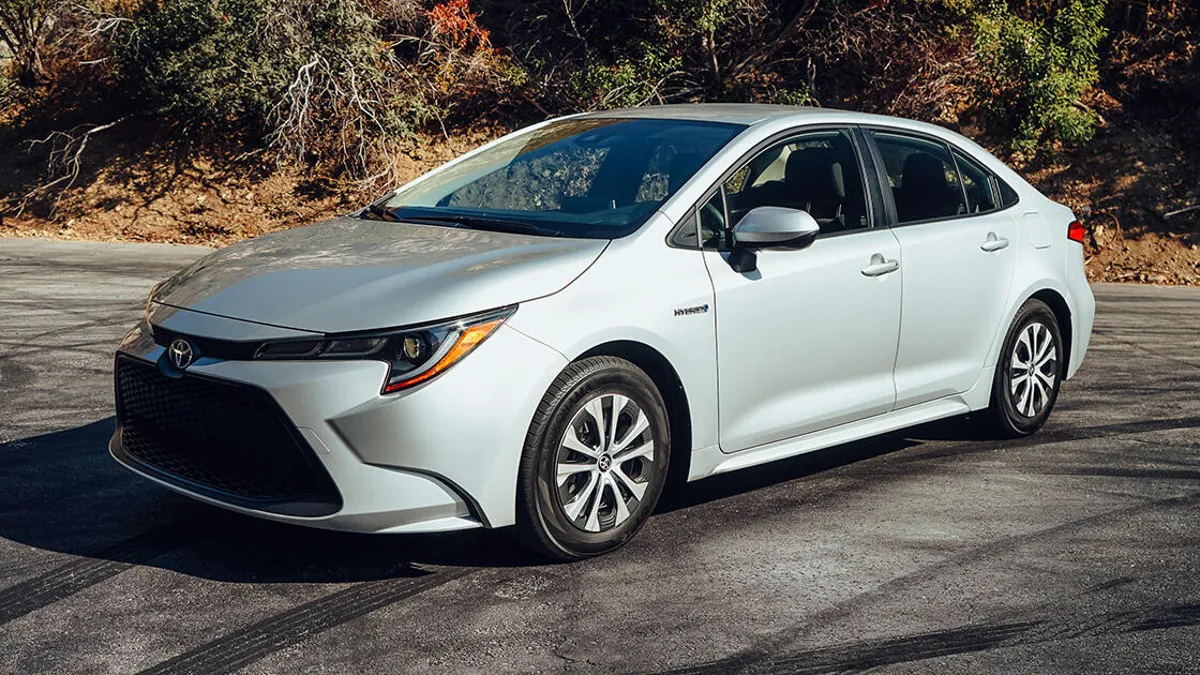
Interior and exterior build quality reflects Toyota’s attention to detail and long-term durability. Materials selection emphasizes longevity over luxury, with fabrics, plastics, and trim pieces chosen for their ability to withstand daily use without showing excessive wear.
The dashboard layout prioritizes functionality and ease of use, with controls and switches demonstrating the tactile quality and durability expected from Toyota products. Electronic systems, including the infotainment display and climate controls, have shown excellent reliability with minimal reported failures or glitches.
Maintenance requirements for the Corolla Hybrid are minimal and follow conventional service intervals, making ownership costs predictable and reasonable. The hybrid system requires little additional maintenance beyond standard items like oil changes, air filters, and tire rotations.
The regenerative braking system significantly extends brake component life, with many owners reporting original brake pads lasting well over 80,000 miles. Routine inspections can identify potential issues early, though major problems remain rare in the Corolla Hybrid’s short production history.
Fuel efficiency remains consistently high throughout the vehicle’s lifespan, with many owners reporting real-world fuel economy that meets or exceeds EPA estimates even after tens of thousands of miles.
The hybrid system’s ability to maintain its efficiency over time reflects the durability and proper calibration of its components, ensuring that the primary benefit of hybrid ownership continues throughout the vehicle’s life. This consistency in fuel economy performance has made the Corolla Hybrid particularly popular among high-mileage commuters and budget-conscious buyers.
The Corolla Hybrid’s reliability extends to its safety and driver assistance systems, with Toyota Safety Sense 2.0 features operating consistently and reliably across various driving conditions.
Features like pre-collision warning, lane departure alert, and adaptive cruise control have shown minimal false activations or system failures, contributing to overall owner satisfaction. The comprehensive suite of airbags and passive safety features meets the highest standards while maintaining the reliability expected from Toyota products.
Real-world reliability data, while limited due to the model’s recent introduction, has been overwhelmingly positive, with warranty claims and reported issues significantly below industry averages.
Early adopters have reported trouble-free ownership experiences, with most maintenance limited to routine service items. The vehicle’s ability to maintain its hybrid functionality and efficiency even in extreme weather conditions has impressed owners in various climates, from harsh winters to hot summers.
4. Toyota Highlander Hybrid (2006-Present)
The Toyota Highlander Hybrid has carved out a distinguished reputation as one of the most reliable three-row SUVs in the hybrid market, successfully combining the space and utility that families need with Toyota’s proven hybrid technology and exceptional build quality.
Throughout its multiple generations since 2006, the Highlander Hybrid has consistently delivered the dependability that has made it a favorite among families seeking a practical, efficient, and reliable vehicle for long-term ownership.
The foundation of the Highlander Hybrid’s reliability lies in Toyota’s commitment to using proven technology rather than cutting-edge systems that might compromise durability. The current generation utilizes a 2.5-liter four-cylinder engine paired with three electric motors, creating an all-wheel-drive system that delivers both efficiency and capability.
This powertrain represents an evolution of systems that have been tested in millions of vehicles worldwide, ensuring that potential issues have been identified and resolved before reaching consumers. The conservative approach to hybrid technology implementation has resulted in exceptionally few powertrain-related problems across multiple model years.
Battery reliability has been a standout feature of the Highlander Hybrid, with both nickel-metal hydride and lithium-ion battery packs demonstrating excellent longevity characteristics.
The battery management system’s conservative approach to charging and discharging helps extend battery life well beyond warranty periods, with many owners reporting original battery packs functioning effectively after 150,000 miles or more.
The battery pack’s placement and thermal management system protect it from environmental extremes while ensuring optimal operating temperatures, contributing to its impressive durability record.
The mechanical components of the Highlander Hybrid have proven exceptionally durable, with the engine, transmission, and drivetrain showing minimal wear even under demanding family use.
The all-wheel-drive system’s electric rear motor eliminates many of the mechanical complexity and maintenance issues associated with traditional transfer cases and differentials, while providing superior traction control and fuel efficiency.
The suspension system, designed to handle the additional weight of the hybrid components while maintaining ride comfort, has demonstrated excellent longevity even when regularly loaded with passengers and cargo.
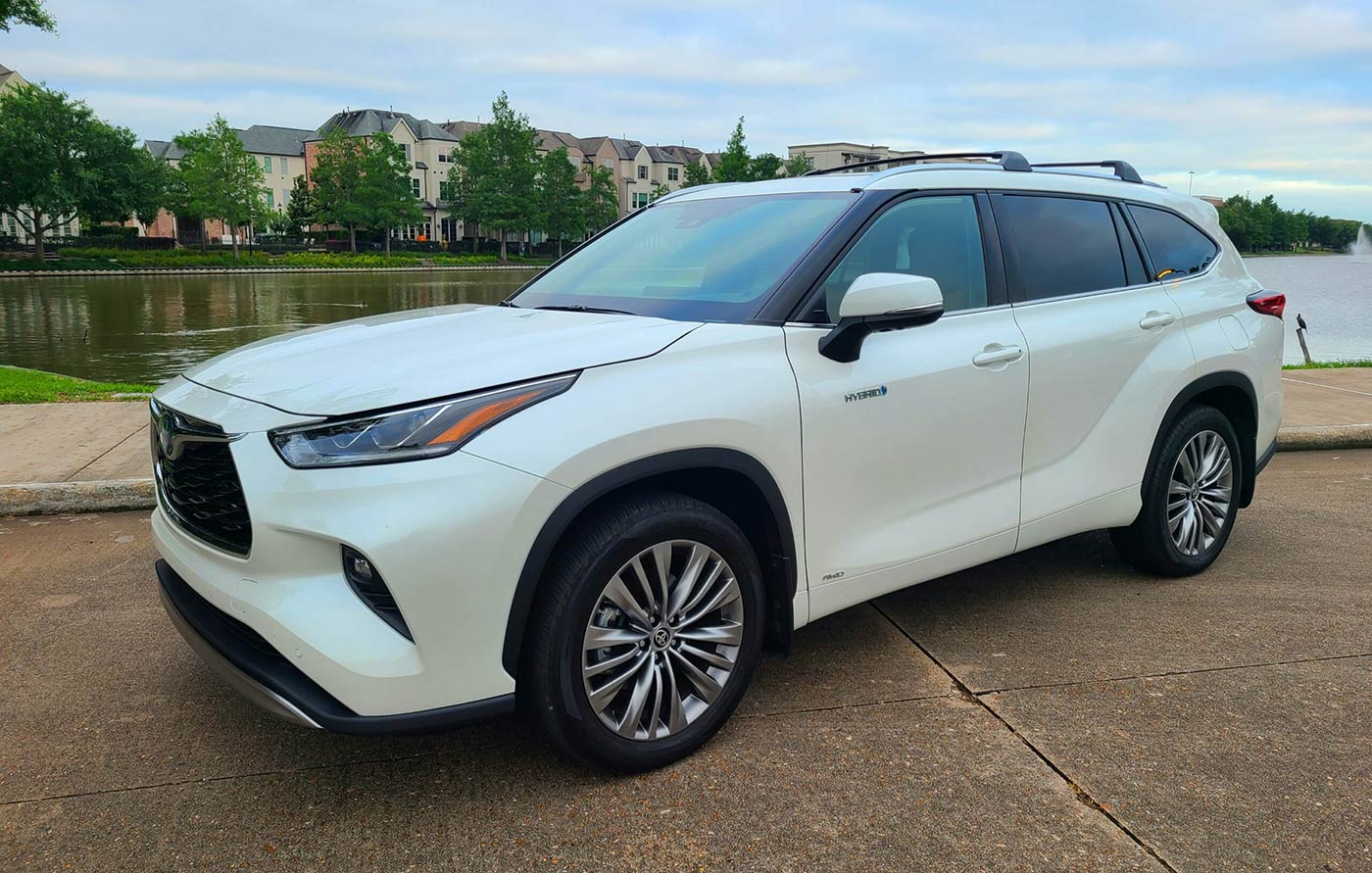
Interior quality and electronic system reliability have been consistent strengths throughout the Highlander Hybrid’s production run. The three-row seating configuration maintains its comfort and functionality even after years of family use, with seat materials and mechanisms showing minimal wear.
The infotainment system, climate controls, and numerous convenience features have operated reliably without the glitches or failures that can plague complex modern vehicles. The comprehensive Toyota Safety Sense suite has performed consistently across various driving conditions without false alarms or system malfunctions.
Maintenance costs for the Highlander Hybrid remain reasonable despite its complexity, with routine service intervals similar to conventional vehicles.
The hybrid system’s self-diagnostic capabilities help identify potential issues before they become expensive problems, while the widespread availability of Toyota-trained technicians ensures that service can be performed competently and affordably.
The regenerative braking system significantly extends brake component life, offsetting some of the higher costs associated with maintaining a larger, more complex vehicle.
Real-world durability testing by families across the country has consistently validated the Highlander Hybrid’s reliability reputation. Many examples have surpassed 200,000 miles with original major components intact, including the hybrid battery and electric motors.
The vehicle’s ability to maintain its fuel economy and hybrid functionality even at high mileages demonstrates the quality of Toyota’s engineering and the durability of the hybrid system components. Fleet operators and high-mileage drivers have increasingly chosen the Highlander Hybrid for its combination of space, efficiency, and reliability.
Towing capability and heavy-duty use haven’t significantly impacted the Highlander Hybrid’s reliability, with many owners successfully using their vehicles for camping, boat towing, and other recreational activities without experiencing premature component wear.
The hybrid system’s additional torque at low speeds improves towing performance compared to non-hybrid variants, while the sophisticated thermal management system prevents overheating during demanding use.
This versatility, combined with excellent reliability, has made the Highlander Hybrid popular among active families who need both utility and dependability. The Highlander Hybrid’s strong resale value reflects market confidence in its long-term reliability and continued desirability.
Three-row SUVs face significant wear from family use, yet the Highlander Hybrid consistently retains more of its value than competitors, indicating that buyers recognize its superior build quality and reliability record. This strong resale performance makes the initial purchase price more palatable while providing additional financial security for long-term owners.
Also Read: 5 Trucks With the Best Factory Docking Stations and 5 Bare Consoles
5. Toyota Sienna Hybrid (2021-Present)
The Toyota Sienna Hybrid represents a revolutionary approach to minivan design, being the only hybrid minivan available in the North American market and setting new standards for reliability and efficiency in the family hauling segment.
Since its complete redesign for the 2021 model year, the Sienna has embraced hybrid technology exclusively, eliminating the traditional V6 engine option in favor of a sophisticated hybrid powertrain that delivers both impressive fuel economy and exceptional reliability.
The Sienna Hybrid’s powertrain consists of a 2.5-liter four-cylinder engine working in conjunction with multiple electric motors to provide all-wheel-drive capability and hybrid efficiency. This system represents the culmination of Toyota’s hybrid development experience, incorporating lessons learned from millions of miles of real-world operation across multiple vehicle platforms.
The integration of hybrid technology as standard equipment, rather than an optional system, has allowed Toyota to optimize every aspect of the vehicle’s design around the hybrid powertrain, resulting in better reliability and performance integration.
Battery technology in the Sienna Hybrid utilizes Toyota’s latest lithium-ion battery pack, which offers improved energy density and durability compared to previous nickel-metal hydride systems.
The battery’s location beneath the front seats provides excellent protection from impact damage while maintaining optimal weight distribution. The sophisticated battery management system monitors individual cell performance and adjusts charging and discharging patterns to maximize longevity, with early indications suggesting excellent durability characteristics similar to other Toyota hybrid applications.
The mechanical reliability of the Sienna Hybrid has been impressive in its initial years of production, with the engine and transmission showing minimal issues despite the demanding duty cycle typical of family vehicles.
The all-wheel-drive system’s electric rear motor provides immediate traction response while eliminating the mechanical complexity of traditional transfer cases and differentials.
The suspension system, redesigned to accommodate the hybrid components while maintaining excellent ride quality and handling, has proven durable even when regularly loaded to capacity with passengers and cargo.
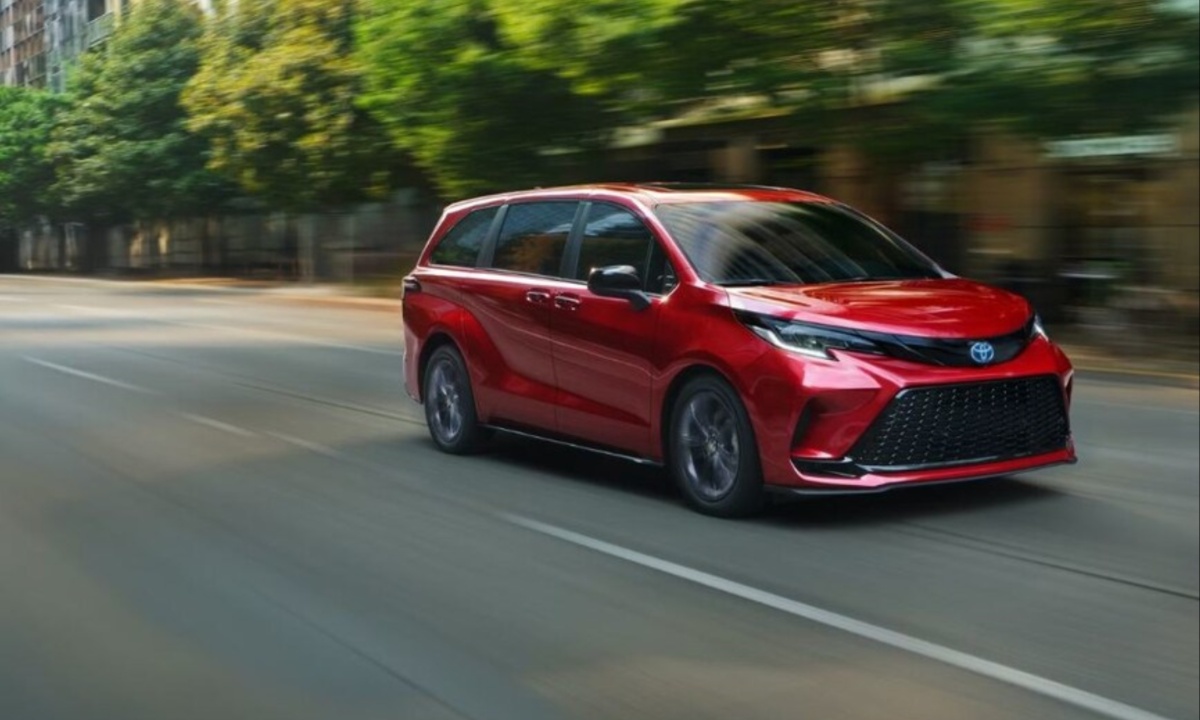
Interior durability has been engineered specifically for family use, with materials selected for their ability to withstand the punishment typical of vehicles carrying children and cargo regularly.
The second-row captain’s chairs and third-row bench seat maintain their comfort and functionality even after extensive use, while the numerous storage compartments and convenience features continue to operate reliably.
The infotainment system and rear-seat entertainment options have proven stable and user-friendly, with minimal reported glitches or operational issues.
Maintenance requirements for the Sienna Hybrid follow Toyota’s established service intervals, with hybrid-specific maintenance being minimal and well-integrated into routine service procedures.
The hybrid system’s self-monitoring capabilities provide early warning of potential issues, while the robust construction of major components typically prevents unexpected failures. The regenerative braking system significantly extends brake component life, an important consideration given the vehicle’s size and typical loaded weight, resulting in lower long-term maintenance costs.
Cargo capacity and family utility haven’t been compromised by the hybrid system integration, with the Sienna maintaining its class-leading interior space and storage capability.
The hybrid components have been cleverly packaged to maintain full functionality while adding the benefits of improved fuel economy and all-wheel-drive capability. The power sliding doors, power tailgate, and numerous family-friendly features continue to operate reliably even after extensive use, demonstrating Toyota’s attention to long-term durability in high-use applications.
Real-world reliability data, while limited due to the model’s recent introduction, has been overwhelmingly positive, with warranty claims and reported issues well below industry averages for both hybrid vehicles and minivans.
Early adopters have reported exceptional satisfaction with both the hybrid system’s performance and the vehicle’s overall reliability, with most maintenance limited to routine service items. The vehicle’s ability to maintain consistent fuel economy and hybrid functionality across various driving conditions and load levels has impressed owners who frequently carry passengers and cargo.
5 Problematic Toyota Hybrids
These problematic vehicles suffer from persistent electronic malfunctions due to complex infotainment integration, sensitive hybrid control modules, and inadequate software validation that creates recurring dashboard warnings, system resets, and intermittent performance issues throughout normal driving operations and climate variations.
Their troublesome engineering includes overly complicated user interfaces, poorly isolated electronic components, and aggressive hybrid programming that amplifies the glitch symptoms typically associated with temperature cycling or electrical interference during daily usage patterns.
From randomly appearing warning lights that require dealer diagnosis to hybrid system shutdowns that leave drivers stranded in traffic, these electronic issues demand frequent service visits and software updates.
Owners discover that while these vehicles offer impressive fuel economy and advanced technology features, their electronic complexity creates persistent frustration through unpredictable system behavior and requires ongoing dealer attention to maintain basic hybrid functionality and eliminate recurring fault codes.
1. Toyota Prius (2010-2015, 2016-2018)
Despite being the pioneering hybrid vehicle that established Toyota’s reputation in the electrification space, certain generations of the Toyota Prius have experienced more reliability issues than other Toyota hybrid models, particularly the third-generation (2010-2015) and early fourth-generation (2016-2018) models.
While still generally more reliable than many competitors, these Prius generations have demonstrated specific problem areas that can result in significant repair costs and ownership frustrations.
The 2010-2015 Prius, while revolutionary in its design and efficiency, has shown several concerning reliability trends as these vehicles age. One of the most significant issues has been premature battery pack degradation, with many owners reporting noticeable efficiency losses and hybrid system warnings between 100,000 and 150,000 miles.
Unlike other Toyota hybrids that often exceed these mileages with minimal battery issues, the third-generation Prius battery management system appears less conservative, potentially contributing to reduced longevity. The battery replacement cost, often exceeding $4,000 when performed at dealerships, can make these repairs economically challenging for owners of aging vehicles.
Engine-related problems have also been more prevalent in these Prius generations compared to other Toyota hybrids. The 1.8-liter engine, while efficient, has shown tendencies toward excessive oil consumption in some examples, requiring frequent monitoring and top-offs between service intervals.
More concerning is the issue of carbon buildup on intake valves, a common problem in direct-injection engines that can cause rough idling, reduced power, and potentially expensive cleaning procedures. Some owners have reported engine knock and timing chain issues, problems that are virtually unheard of in other Toyota hybrid applications.
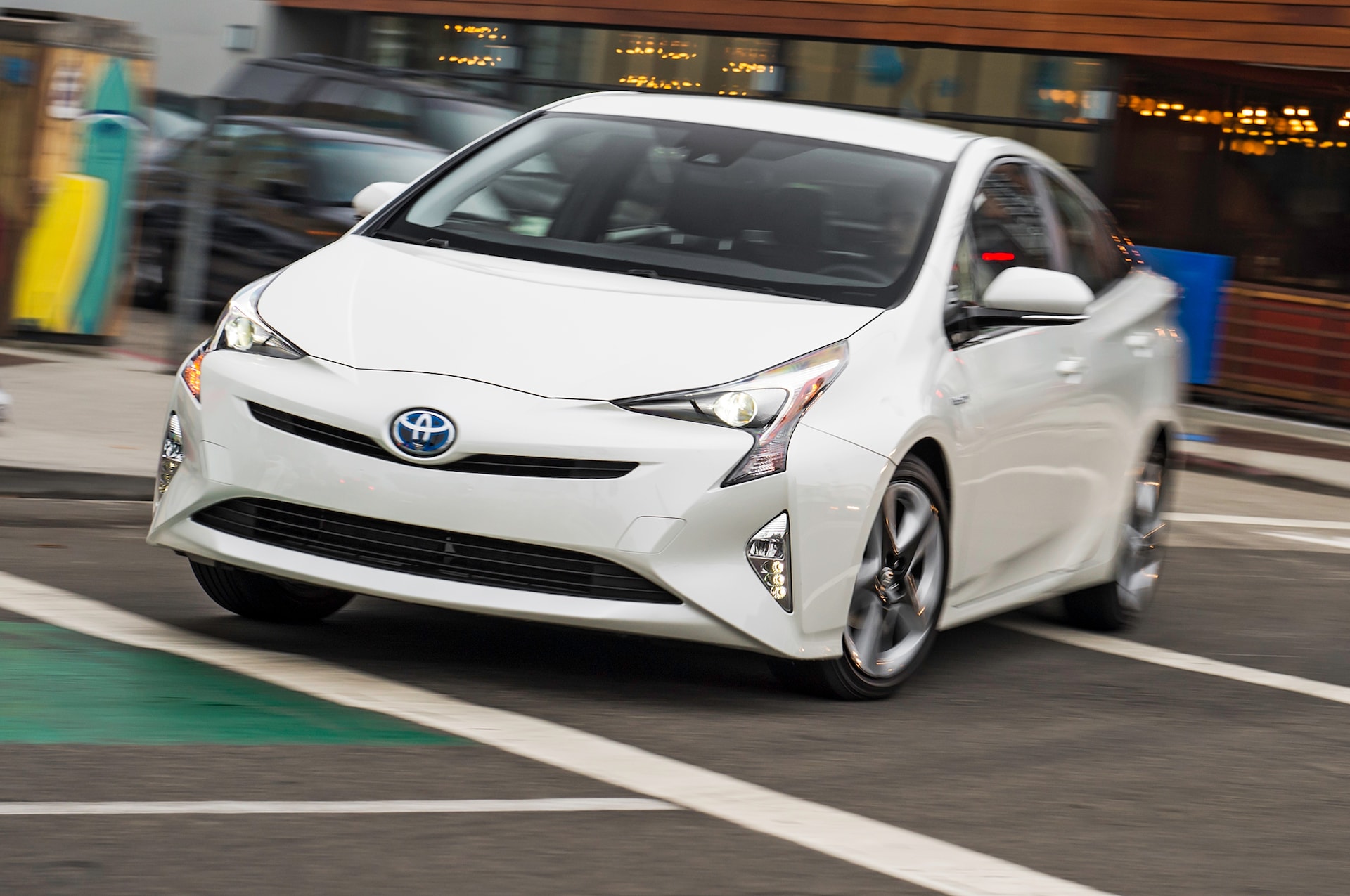
The continuously variable transmission (CVT) in these Prius models has demonstrated higher failure rates compared to similar units in other Toyota hybrids. Symptoms often begin with unusual noises, vibrations, or erratic power delivery, potentially leading to complete transmission failure if not addressed promptly.
The cost of CVT replacement or major repair can exceed $5,000, making it one of the most expensive potential repairs on these vehicles. The transmission issues appear to be more common in high-mileage examples or vehicles that have experienced inadequate maintenance.
Electrical system reliability has been another area of concern, with various components showing higher failure rates than expected from Toyota products.
The 12-volt auxiliary battery, crucial for hybrid system operation, has shown tendencies toward premature failure, often without the warning signs typical in conventional vehicles.
When this battery fails, the hybrid system becomes inoperable, leaving owners stranded. The replacement process requires specific procedures and battery types, making roadside assistance or independent repair challenging.
Interior quality and electronic system reliability have also been problematic in these Prius generations. The dashboard display, climate control system, and various electronic controls have shown higher failure rates than other Toyota hybrid models.
The touch-screen infotainment system, when equipped, has been prone to freezing, unresponsiveness, and complete failure, often requiring expensive replacement or reprogramming. These electronic failures can be particularly frustrating because they often occur without warning and can affect multiple vehicle systems simultaneously.
Suspension and steering components have demonstrated accelerated wear patterns in these Prius models, with many owners reporting premature failure of struts, bushings, and steering components. The vehicle’s low-rolling-resistance tires, while contributing to efficiency, often wear unevenly and require more frequent replacement than conventional tires.
The brake system, despite benefiting from regenerative braking, has shown some issues with brake actuator problems and premature brake pad wear in stop-and-go driving conditions.
Paint and exterior trim quality have been below Toyota’s typical standards on these Prius generations, with many owners reporting premature fading, peeling, and deterioration of exterior surfaces.
The plastic trim pieces often become brittle and crack, particularly in extreme weather conditions. These cosmetic issues, while not affecting vehicle operation, can significantly impact resale value and owner satisfaction.
The complexity of diagnosing and repairing issues in these Prius models has also contributed to ownership frustrations. The sophisticated hybrid system requires specialized diagnostic equipment and training, limiting repair options to dealers and specially equipped independent shops.
Labor costs for hybrid system repairs are typically higher than conventional vehicle repairs, and parts availability can sometimes be limited, extending repair times and increasing costs.
2. Toyota Prius Prime (2017-2022)
The Toyota Prius Prime, representing Toyota’s entry into the plug-in hybrid market, has experienced a range of reliability issues that set it apart from the brand’s typically dependable hybrid offerings.
While offering impressive electric-only range and fuel efficiency, the added complexity of the plug-in hybrid system has introduced new failure points and maintenance challenges that have resulted in higher-than-expected warranty claims and owner complaints.
The most significant reliability concern with the Prius Prime centers around its charging system and related components. Many owners have reported issues with the onboard charger, which can fail partially or completely, preventing the vehicle from accepting a charge from external sources.
This failure not only eliminates the primary benefit of plug-in hybrid ownership but can also be expensive to repair, with replacement costs often exceeding $2,500. The charging port itself has shown susceptibility to weather-related damage and corrosion, particularly in regions with harsh winters where road salt is common.
Battery-related problems have been more prevalent in the Prius Prime compared to conventional Toyota hybrids, largely due to the larger, more complex lithium-ion battery pack required for plug-in operation.
The battery management system has shown tendencies toward erratic behavior, sometimes failing to properly balance cells or maintain optimal charging characteristics. Some owners have experienced sudden battery capacity loss, resulting in dramatically reduced electric-only range and potential safety concerns when the vehicle unexpectedly switches to hybrid mode during electric operation.
The Prius Prime’s engine has exhibited some unique problems not commonly seen in other Toyota hybrid applications. The engine’s integration with the more complex plug-in hybrid system has led to issues with engine start/stop behavior, sometimes resulting in rough starts, stalling, or failure to start altogether.
The engine cooling system, which must manage both engine heat and battery thermal management, has shown higher failure rates for components like water pumps and thermostats. These cooling system failures can be particularly expensive because they often affect both the engine and hybrid system components.
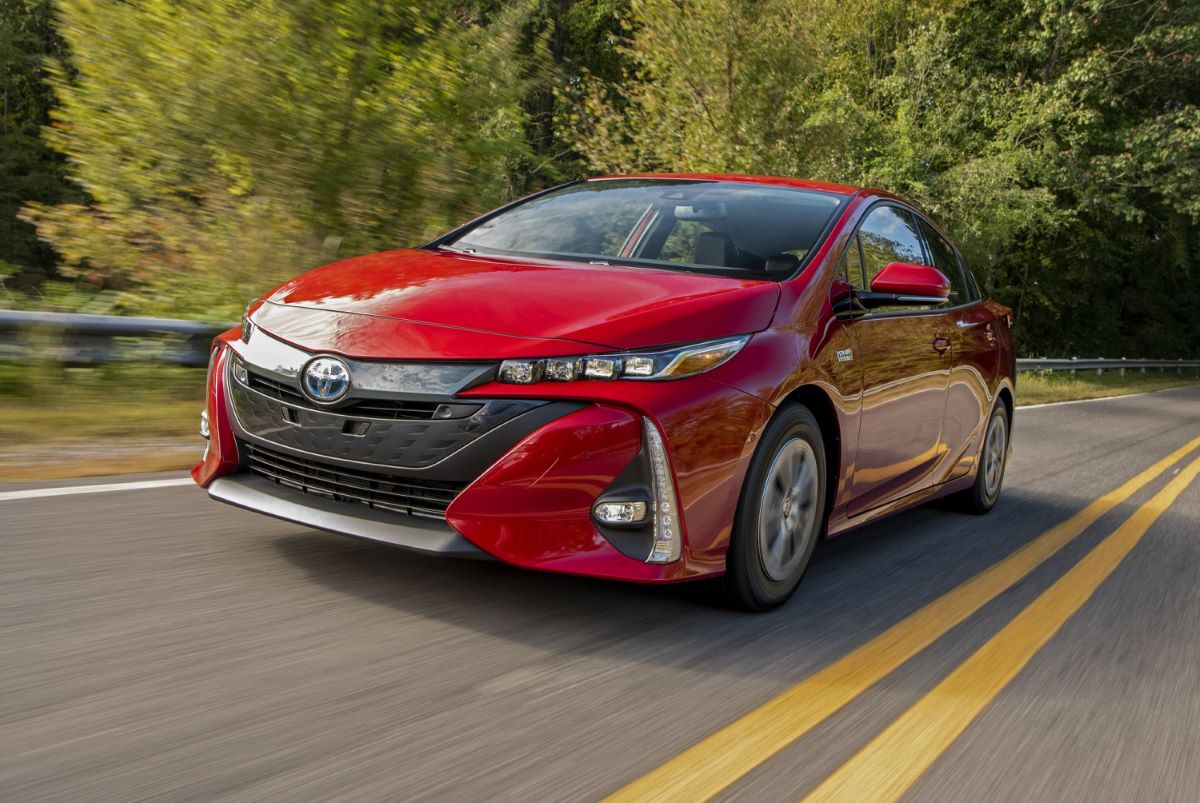
Electronic system reliability has been a persistent issue in the Prius Prime, with the vehicle’s numerous computers and control modules showing higher failure rates than typical Toyota products.
The vehicle’s infotainment system, which integrates charging status, energy flow displays, and connectivity features, has been prone to freezing, random resets, and complete failure.
The charging timer and scheduling functions often malfunction, preventing owners from taking advantage of time-of-use electricity rates or failing to complete charging cycles as programmed.
Climate control system problems have been particularly troublesome in the Prius Prime, with the electric air conditioning compressor showing higher failure rates than conventional systems.
When the electric compressor fails, the vehicle loses air conditioning capability during electric-only operation, severely limiting the usability of the EV mode during hot weather. The heating system, which relies on both electric elements and engine coolant heat, has shown integration problems that can result in inadequate cabin heating or excessive battery drain.
Interior quality issues have been more pronounced in the Prius Prime compared to other Toyota hybrid models, with various trim pieces, switches, and controls showing premature wear or failure.
The distinctive white interior trim used in some models has proven particularly susceptible to staining and discoloration, while the dashboard materials often develop cracks or exhibit poor fit and finish. The seats, while comfortable initially, have shown accelerated wear patterns, particularly in the bolster areas.
The Prius Prime’s complex electrical architecture has made diagnosis and repair more challenging and expensive than conventional hybrid vehicles. Multiple computer modules must communicate properly for all systems to function correctly, and when communication errors occur, they can be difficult and time-consuming to diagnose.
The specialized training and equipment required for Prius Prime service have limited repair options, often forcing owners to use dealership service departments where labor rates are typically higher.
Software-related issues have been ongoing problems for Prius Prime owners, with various recalls and technical service bulletins issued to address programming problems in different control modules.
These software issues can affect everything from charging behavior to engine operation, and while updates are available, they often require multiple dealership visits to fully resolve. Some software problems have required complete module replacement rather than simple reprogramming, significantly increasing repair costs.
The Prius Prime’s integration with smartphone apps and remote services has also proven problematic, with connectivity issues, server problems, and app malfunctions frequently reported by owners.
These connected features, while convenient when working properly, add another layer of complexity and potential failure points that didn’t exist in simpler hybrid vehicles.
3. Toyota Highlander Hybrid (2006-2013)
The first and second-generation Toyota Highlander Hybrid, produced from 2006 to 2013, represents an early attempt at applying hybrid technology to a three-row SUV platform, and while pioneering in concept, these early models have demonstrated several reliability issues that distinguish them from Toyota’s more mature hybrid offerings.
The complexity of adapting hybrid technology to a larger, heavier vehicle platform during the early years of hybrid development resulted in various problems that have become more apparent as these vehicles age.
One of the most significant issues with early Highlander Hybrids concerns the hybrid battery system, which has shown higher failure rates compared to other Toyota hybrid applications from the same era.
The nickel-metal hydride battery pack, while generally robust in Toyota’s lighter hybrid vehicles, appears to struggle with the additional demands of powering a heavier SUV.
Many owners report battery degradation and failure between 80,000 and 120,000 miles, significantly earlier than expected for Toyota hybrid systems. The battery replacement cost, often exceeding $5,000 at dealerships, represents a major financial burden for owners of aging vehicles.
The complex all-wheel-drive hybrid system used in these Highlander models has proven problematic, with multiple electric motors, inverters, and control systems creating numerous potential failure points.
The rear electric motor, responsible for providing power to the rear wheels, has shown higher failure rates than expected, sometimes failing and leaving the vehicle in front-wheel-drive mode only.
The sophisticated control systems managing power distribution between front and rear wheels have demonstrated software glitches and hardware failures that can be expensive to diagnose and repair.
Engine-related problems have been more prevalent in these early Highlander Hybrids compared to other Toyota hybrid vehicles of the same era. The 3.3-liter V6 engine, while powerful, has shown tendencies toward premature wear in certain components, particularly the variable valve timing system and timing chain components.
Oil consumption issues have also been reported more frequently than in other Toyota engines, requiring careful monitoring and potentially expensive repairs if not addressed promptly.
The continuously variable transmission (CVT) system used in these Highlander Hybrids has demonstrated reliability issues that distinguish it from the more robust CVT systems used in other Toyota hybrid applications.
Owners frequently report shuddering, slipping, and erratic shifting behavior, often beginning around 60,000 to 80,000 miles. Complete CVT failure, while not common, has been reported with sufficient frequency to be concerning, and replacement costs can exceed $6,000, making it one of the most expensive potential repairs on these vehicles.
Electrical system reliability has been another area of concern, with various high-voltage components showing premature failure. The DC-DC converter, which manages power between the high-voltage hybrid system and conventional 12-volt electrical systems, has demonstrated higher failure rates than expected.
The sophisticated power management system, while advanced for its time, has proven less reliable than the simpler systems used in other Toyota hybrids, sometimes leading to complete hybrid system shutdown and expensive diagnostic procedures.
Interior and comfort system problems have been more frequent in these early Highlander Hybrids, with the climate control system showing particular issues.
The electric air conditioning compressor, necessary for maintaining cooling during electric-only operation, has higher failure rates compared to conventional AC systems. The heating system, which must integrate engine coolant heat with electric heating elements, has shown integration problems that can result in inadequate heating or excessive battery drain.
The complexity of the early Highlander Hybrid’s systems has made diagnosis and repair more challenging than typical Toyota vehicles. The numerous control modules, sensors, and interconnected systems require specialized diagnostic equipment and extensive technical knowledge, limiting repair options and increasing costs.
Parts availability has also been an issue, with some hybrid-specific components becoming difficult to source as these vehicles age. Suspension system problems have been more pronounced in these early Highlander Hybrids, partly due to the additional weight of the hybrid components and the complexity of integrating the rear electric motor with the suspension design.
Premature wear of struts, bushings, and other suspension components has been reported more frequently than in conventional Highlander models from the same era.
The early Highlander Hybrid’s sophisticated systems, while advanced for their time, have proven less robust than Toyota’s later hybrid applications, resulting in higher maintenance costs and more frequent repairs as these vehicles age.
4. Toyota Prius c (2012-2019)
The Toyota Prius c, marketed as an entry-level hybrid designed to bring Toyota’s hybrid technology to a broader audience, has unfortunately developed a reputation for reliability issues that set it apart from other Toyota hybrid offerings.
Despite sharing the Prius name and hybrid technology, the Prius c has experienced numerous problems that have frustrated owners and tarnished its reputation in the compact hybrid segment.
The most significant reliability concern with the Prius c centers around its hybrid battery system, which has shown premature degradation and failure rates higher than other Toyota hybrid models. Many owners report battery-related warning lights and reduced hybrid functionality appearing between 60,000 and 100,000 miles, significantly earlier than the 150,000+ mile expectations typical of other Toyota hybrids.
The battery replacement cost, often exceeding $3,500, represents a substantial portion of the vehicle’s remaining value, making repair decisions economically challenging for many owners.
Engine reliability has been another persistent problem area for the Prius c, with the 1.5-liter four-cylinder engine showing various issues not commonly seen in other Toyota hybrid applications.
Oil consumption problems have been frequently reported, with some engines requiring oil additions between service intervals. More concerning are reports of engine knock, rough idling, and premature timing chain wear, problems that can lead to expensive repairs or complete engine replacement.
The engine’s integration with the hybrid system has also proven problematic, with issues in the engine control module causing erratic hybrid operation.
The continuously variable transmission (CVT) in the Prius c has demonstrated reliability problems that distinguish it from the more robust CVT systems used in other Toyota hybrid vehicles.
Owners frequently report unusual noises, vibrations, and erratic power delivery beginning around 50,000 to 70,000 miles. Complete CVT failure, while not universal, has been reported with concerning frequency, and replacement costs can exceed $4,000, making it one of the most expensive potential repairs on these vehicles.
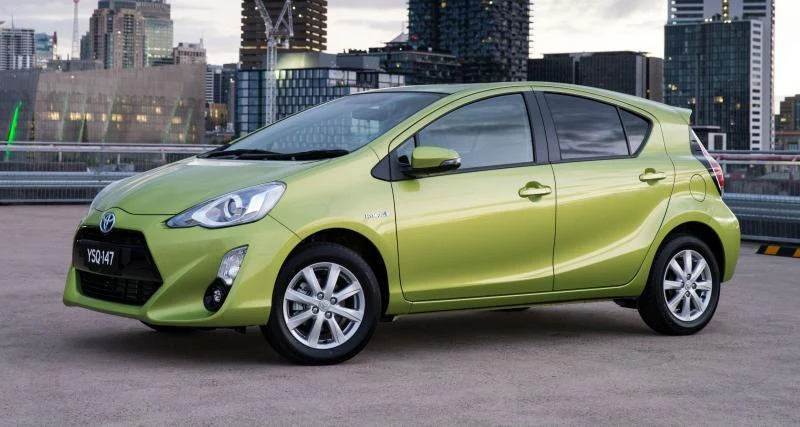
Electrical system problems have been widespread in the Prius c, affecting various components throughout the vehicle. The 12-volt auxiliary battery, critical for hybrid system operation, has shown premature failure rates higher than typical Toyota products.
The hybrid system’s power electronics, including inverters and DC-DC converters, have demonstrated higher failure rates than other Toyota hybrid applications, sometimes resulting in complete hybrid system shutdown and expensive repairs.
Interior quality and electronic system reliability have been consistent problem areas for Prius c owners. The dashboard display frequently malfunctions, showing incorrect information or failing.
The climate control system has shown various issues, including inadequate heating and cooling performance and premature failure of electric components. The infotainment system, when equipped, has been prone to freezing, unresponsiveness, and software glitches that often require complete system replacement rather than simple repairs.
Build quality issues have been more prevalent in the Prius c compared to other Toyota hybrid models, with various interior and exterior components showing premature wear or failure.
Door handles, window regulators, and trim pieces often fail earlier than expected, while paint quality has been inconsistent, with some examples showing premature fading or defects. The overall fit and finish, while acceptable initially, often deteriorates more quickly than typical Toyota products.
Suspension and steering components have shown accelerated wear patterns in the Prius c, with many owners reporting premature failure of struts, bearings, and steering components.
The vehicle’s light weight, while contributing to fuel efficiency, may have resulted in component designs that prove less durable in real-world use. Road noise and vibration issues often develop as suspension components wear, significantly impacting driving comfort and refinement.
The Prius c’s fuel efficiency, while initially impressive, often degrades more quickly than other Toyota hybrids as the vehicle ages and components wear. Owners frequently report noticeable drops in fuel economy well before 100,000 miles, often coinciding with hybrid system problems or engine issues.
This degradation in the vehicle’s primary selling point can be particularly frustrating for owners who purchased the vehicle specifically for its efficiency benefits.
Service and repair costs for the Prius c have been higher than expected for a compact hybrid, partly due to the complexity of diagnosing problems in the integrated hybrid system.
The vehicle’s numerous electronic control modules and sensors require specialized diagnostic equipment and training, limiting repair options and increasing labor costs. Parts availability has also been an issue, with some hybrid-specific components becoming difficult to source or expensive to replace.
5. Toyota Avalon Hybrid (2013-2018)
The Toyota Avalon Hybrid, representing Toyota’s attempt to bring hybrid technology to the full-size luxury sedan segment, has experienced several significant reliability issues that have disappointed owners and distinguished it from Toyota’s typically dependable hybrid offerings.
While the Avalon nameplate has historically been associated with exceptional reliability and build quality, the hybrid variant from 2013 to 2018 has struggled with various problems that have resulted in higher-than-expected warranty claims and repair costs.
The most prominent reliability issue with the Avalon Hybrid concerns its complex hybrid powertrain system, which has shown higher failure rates compared to other Toyota hybrid applications.
The integration of hybrid technology with the Avalon’s larger, more powerful engine platform appears to have created additional stress points and failure modes not seen in other Toyota hybrids.
Many owners report hybrid system warning lights, reduced battery performance, and erratic power delivery beginning around 80,000 to 120,000 miles, earlier than expected for Toyota hybrid technology.
Battery-related problems have been particularly troublesome in the Avalon Hybrid, with the nickel-metal hydride battery pack showing premature degradation and failure rates higher than other Toyota hybrid models from the same era.
The battery management system appears less conservative than other Toyota hybrid applications, potentially contributing to reduced battery longevity. When battery replacement becomes necessary, costs often exceed $4,500, representing a significant financial burden for owners of aging vehicles.
The Avalon Hybrid’s engine, while sharing basic architecture with other Toyota engines, has demonstrated unique problems when integrated with the hybrid system. The 2.5-liter four-cylinder engine has shown tendencies toward excessive oil consumption, carbon buildup on intake valves, and premature wear of timing chain components.
These issues appear more pronounced in the hybrid application, possibly due to the different operating patterns and stress cycles created by the hybrid system’s engine start/stop behavior.
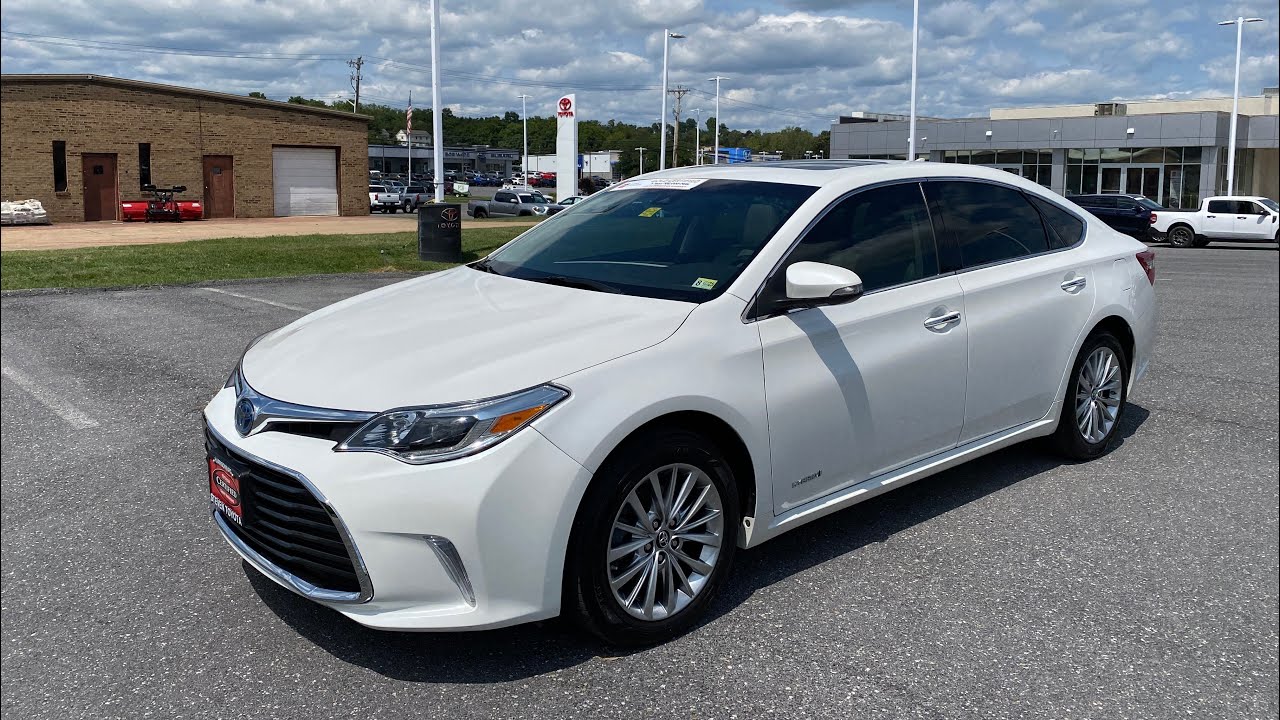
Transmission problems have been more frequent in the Avalon Hybrid compared to the conventional Avalon, with the electronically controlled continuously variable transmission (ECVT) showing various issues.
Owners report erratic shifting behavior, unusual noises, and power delivery problems that can significantly impact the driving experience. Complete transmission failure, while not common, has been reported with sufficient frequency to be concerning, and replacement costs can exceed $5,000.
The sophisticated electrical architecture required for the Avalon Hybrid’s luxury features and hybrid system has proven problematic, with various electronic control modules showing higher failure rates than expected.
The integration of hybrid system controls with luxury convenience features has created complex interdependencies that can result in cascading failures when individual components malfunction. Diagnostic procedures often require specialized equipment and extensive troubleshooting time, increasing repair costs significantly.
Interior quality and electronic system reliability have been inconsistent in the Avalon Hybrid, despite the vehicle’s positioning as a luxury sedan. The premium infotainment system has shown various glitches, including freezing, unresponsiveness, and complete failure of certain functions.
The sophisticated climate control system, which must integrate with the hybrid system’s electric air conditioning, has demonstrated problems with temperature control and system integration that can be expensive to repair.
The Avalon Hybrid’s advanced driver assistance and safety features, while impressive when functioning properly, have shown reliability issues that distinguish them from Toyota’s typically robust safety systems.
Features like adaptive cruise control, lane departure warning, and collision avoidance have experienced false activations, sensor failures, and calibration problems that often require expensive recalibration or component replacement at specialized service facilities.
Paint and exterior quality issues have been more pronounced in the Avalon Hybrid compared to other Toyota products, with several owners reporting premature paint defects, trim piece failures, and quality control issues.
The vehicle’s premium positioning makes these cosmetic problems particularly disappointing for owners who expect luxury-level fit and finish throughout the ownership experience.
Real-world reliability data shows the Avalon Hybrid experiencing warranty claims and repair incidents at rates significantly higher than other Toyota hybrid vehicles, with many problems occurring during the critical years when vehicles are transitioning from warranty coverage to owner responsibility for repairs.
The combination of complex systems, premium components, and integration challenges has created a vehicle that, while impressive in many ways, has proven less reliable than Toyota’s typical hybrid offerings.
Also Read: 5 Engine Swaps That Extend Life and 5 That End It

